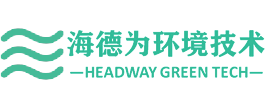Vacuum distillation plant for used engine oil is the key process for used engine oil recycling. But there are different plants and technologies to achieve this with different investment, operation cost, base oil yield and base oil quality. For most beginners, they don't know their difference and don't know how to choose.
We'd like to give a general introduction to these technologies based on our years' practical experience.
Kettle vacuum evaporation
The kettle vacuum evaporation technology is mainly for beginners with small processing capacity. Used engine oil is pumped into distillation kettle in vacuum condition, and then different oil fractions are evaporated and condensed with temperature increase. It is the simplest method to remove water and produce different fractions from used engine oil. Generally, heat carriers such as thermal oil or molten salt are used to heat the oil in the kettle.
It has the following advantages:
1. Simple structure, simple operation and easy to use;
2. Few fault points, easy to maintain, safe and reliable;
3. The equipment is low and can be installed in ordinary factories, with low investment and short construction time;
4. The processing capacity can be adjusted flexibly, and the output and product types can be adjusted at any time according to raw material supply, market demand and liquidity;
5. After adding alkali, the base oil will be replenished with less crude oil, better color and higher oxidation stability.
Its main disadvantages are:
High energy consumption
Low base oil yield
The flash point of the base oil is lower than other technologies
Vacuum distillation
Vacuum distillation is a negative pressure distillation process for used engine oil that has been gradually promoted in China since 2015. In this process, used engine oil will be dehydrated from the flash distillation column, and then is distilled into several base oil fractions in a sieve tray column with entry temperature 380°C or 400°C.
The main equipment it uses include a tubular heating furnace, a dehydration unit and a vacuum distillation unit.
Its main advantages include:
Continuous production, easy to realize automated production control;
Large processing capacity;
The indicators of the fractionated products are relatively stable;
Energy consumption is relatively low.
Its main disadvantages include:
Columns, heaters, heat exchangers and other parts are easily blocked and the operating rate is low. This is a common phenomenon in China;
It requires a large amount of raw materials to start construction, requires a large amount of working capital, and has poor ability to respond to market changes;
Large investment;
The temperature of raw materials entering the tower is generally between 380-400°C, resulting in the cracking of some oil products and greater losses;
Due to the high failure rate, the proportion of petroleum gas and naphtha produced during the production process is relatively high, resulting in poor safety and reliability.
Wiped film evaporation plus vacuum distillation
In this process, used engine oil is dehydrated in an film evaporator and then is evaporated on the wipe falling film evaporator, the gas phase then enters the vacuum distillation tower for fractionation. Limited by the specifications of the scraper evaporator, it is generally suitable for waste oil recycling projects with a daily processing capacity of 30-100 tons. Compared with the vacuum distillation process, the use of this process can alleviate the problem of clogging of the distillation tower internals and can moderately increase the base oil yield. Other advantages and disadvantages are basically the same as the vacuum distillation process. But this process will be with more investment than vacuum distillation process.
Short Path Evaporation
Short-path evaporation is currently the best negative pressure distillation process for used engine oil recycling in the world. Generally, after used engine oil pretreatment, multi-stage short-path evaporators are used. When the oil temperature reaches 220-280°C, under a high vacuum state (10-100Pa) , different base oil components are evaporated and condensed in different evaporators. The reason why this process is the best is because it uses short-path evaporators, which can evaporate the base oil components in used engine oil under lower temperature, minimize the thermal cracking of the base oil components, and achieve the regeneration of the lubricating oil base oil components at maximum yield. This process can relatively completely retain the lubricating oil additive components in the residual oil.
Its main advantages include:
Continuous production, easy to realize automated production control, and product quality is relatively stable;
Produce base oil components with good quality;
High base oil yield.
Its main disadvantages include:
High energy consumption;
Due to the limitation of evaporation area, the processing capacity of a single unit cannot be big;
Due to the high cost of short-path evaporators, the corresponding equipment investment is relatively bigger;
Because most users do not adopt appropriate pre-treatment and process conditions, short-path evaporation equipment is used improperly, resulting in high failure rates and serious entrainment of dirty oil;
Evaporators have high precision. Once they break down, they need to be repaired by professionals from the manufacturer.
Other processes
In China, there have been cases where fire was used to directly heat distillation kettles for vacuum distillation of base oil, and there were also cases where self-designed thin film evaporation processes (such as rotating thin film stills) were used, but they were basically short-lived.



